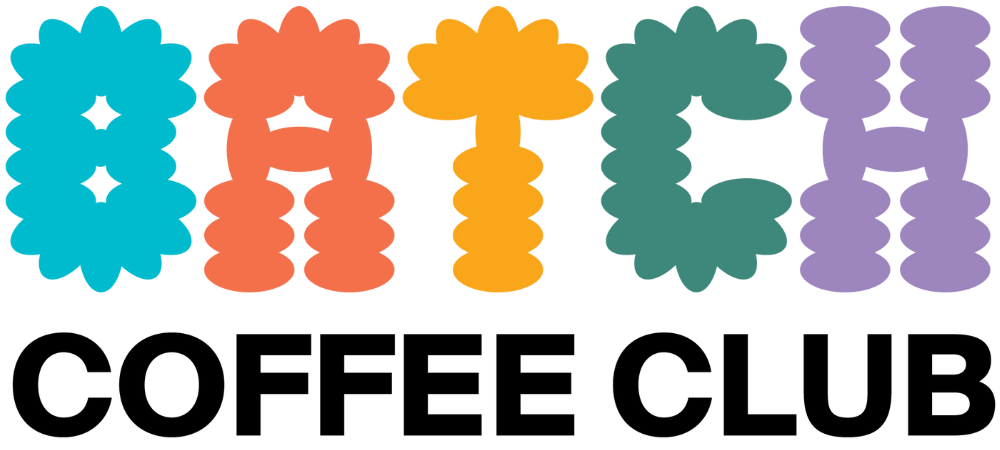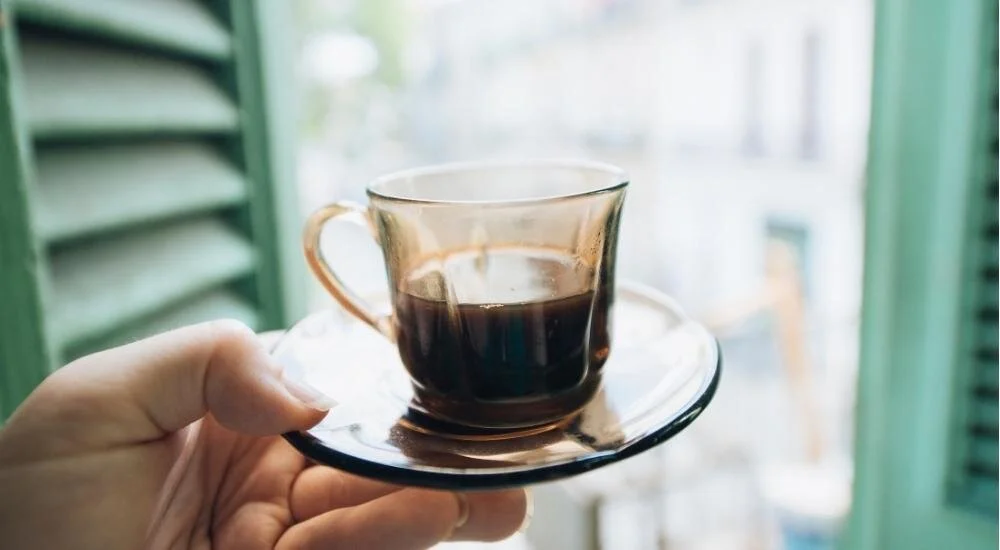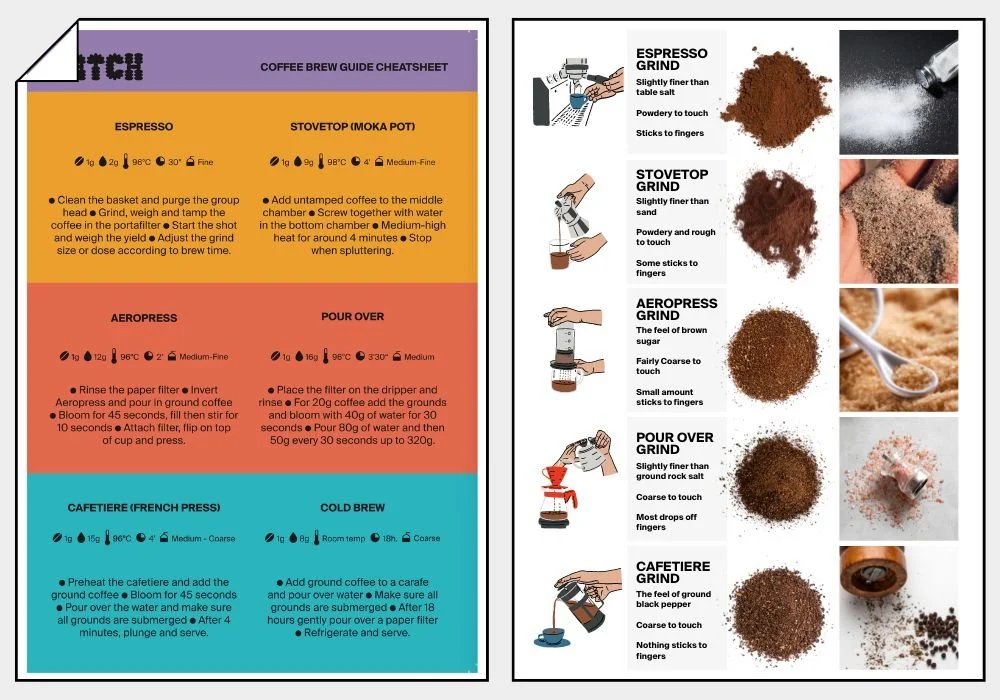Cuban Coffee
Cuban coffee is a little taster of the country's culture and flavour.
Typically served short with a punchy dose of caffeine and sugar it makes the perfect coffee pick me up.
I spent 4 weeks travelling and visiting coffee farms around Cuba in 2018.
As with Cuban people in general, the farmers were always so welcoming and keen to celebrate their traditions.
I remember visiting my first coffee farm over there which also grew sugar cane and tobacco.
After a brief tour of the ‘finca’ the farmer gathered us around a fire to watch his son roast coffee on a huge skillet.
The smells were amazing and the idea of freshly roasted coffee is idyllic.
The reality though (and anyone who knows about coffee roasting will understand) is a scorched and inconsistent roast which results in a pretty bitter tasting coffee.
The under roasted beans taste vegetal while the burnt overroasted beans are bitter.
However, when the coffee was served to us a little later on after it had been ground and brewed the taste was not what I had expected.
The coffee had a big body but the sharp bitterness was instead replaced with a smooth sweet aftertaste.
This is because Cubans typically mix the coffee with sugar and create what they call an espumita (sugar and coffee combination) to sit on top of the brew.
I found that coffee was served with sugar as standard all the way through Latin America weather it was panela in Colombia, Piloncillo in Mexico or espumita in Cuba.
The history dates back many years to when coffee was rationed but also makes the over-roasted and many times low-quality coffee (as the highest quality is normally exported) palatable.
How To Make Cuban Coffee.
Method
Here is our way of making Cuban coffee.
What you need:
3 cup Moka pot
20g Coffee, ground for Moka pot.*
3 tsp sugar
Note: If you are using a different size Moka pot adjust the measurements accordingly.
Free Batch Coffee Cheat Sheet PDF
*For the most authentic Cuban coffee opt for dark roast ground coffee or beans.
Start by making a regular Moka pot coffee. The coffee should be levelled on the top of your Moka pot and not tamped.
While the coffee is brewing on the hob empty the two teaspoons of sugar into a small jug or cup.
Once the coffee has finished brewing splash a small amount of the brewed coffee onto the sugar (around 3 teaspoons worth).
With a spoon start to mix the sugar into the splash of coffee until it’s dissolved, you’re aiming for a foamy consistency, this is called the espumita.
Add some more coffee if there is sugar that doesn’t dissolve.
Now pour the coffee into three small cups and spoon the espumita on top.
Y Disfrutar!
Is Cuban coffee strong?
Cuban coffee would be classed authentically as strong.
The word strong in coffee terms is a fairly ambiguous word however, and can sometimes be referred to as the taste that coffee inherits from the roast profile rather than the amount of caffeine.
Cuban coffee would typically be roasted quite dark and have a strong, bitter taste.
It is then brewed short which intensifies those flavours.
That is why Cuban coffee is prepared with sugar to balance out the ‘strong’ flavours.
Is Cuban coffee the same as espresso?
Cuban coffee is not the same as espresso, however, you can use an expresso to make a Cuban coffee.
Rather than using a Moka pot to brew the coffee, pull a double shot of espresso from your home espresso maker.
Add a tablespoon of the espresso with 2 tablespoons of hot water into the sugar to make the espumita.
Place on top of the espresso to make Cuban coffee. Check out Our Guide on How to make espresso without a machine.
Can you make Cuban coffee in a Nespresso machine?
Yes. Follow the process above, but replace the Moka pot with a Pod machine.
If you normally only have a shot of coffee then use a tablespoon of coffee and a tablespoon of hot water to make the espumita.
What is Cuban coffee with milk called?
Cuban coffee with milk is called "Café con Leche" in Spanish, which literally translates to "coffee with milk."
It is a popular coffee beverage in Cuba and among the Cuban diaspora, and it is similar to other milk-based coffee drinks such as latte or cappuccino.
To make Café con Leche, a shot of Cuban espresso is typically mixed with an equal amount of steamed milk and a little bit of sugar to taste.
The resulting beverage is creamy, sweet, and strong, and it is often enjoyed as a breakfast or mid-morning drink in Cuba.
Some variations may also include frothed milk or cinnamon for additional flavor.
Why is Cuban coffee served in small cups?
Cuban coffee is typically a short coffee, that is topped with a dollop of sweet espumita.
The intense flavours of the short coffee are balanced out by the sugars on top.
Short coffees with added sweeteners are traditional all over the world.
THE BEST COFFEE FROM AROUND THE WORLD
Where can I buy Cuban Coffee?
Cuba export a relatively low amount of coffee, in 2019 they exported 6000 metric tons (to put that in perspective, Brazil exported 2.6 million tons).
So it’s not too common to come across much Cuban coffee.
I don’t think I have ever seen any Cuban coffee on offer in any of the coffee roasters I have frequented over the last few years.
Cuba Directo offer a range of Cuban coffee if you would like to give it a try.
What is different about Cuban Coffee?
Cuban coffee is essentially really dark rich coffee that has is extracted in a way that the coffee is dark and roasty flavoured.
There are many other coffee cultures around the world that celebrate dark, bitter coffees like Italy and Vietnam to name two, but the point of difference in coffee from Cuba is the sweet layer of sugar that is added on top of the brew.
The mix of sugar and coffee that traditionally sits on top of a Cuban coffee masks the bitterness and adds a delicious sweet aftertaste top the coffee.
Is Cuban coffee high in caffeine?
Cuban coffee is generally high in caffeine, as it is made using a strong, dark-roasted espresso blend of coffee beans.
The exact amount of caffeine in Cuban coffee can vary depending on the type of beans used, the roast level, and the brewing method.
However, in general, a single shot of Cuban espresso typically contains about 40-50 milligrams of caffeine, which is roughly the same amount as a standard shot of espresso.
The addition of sugar to Cuban coffee does not significantly affect the caffeine content, as sugar does not contain caffeine.
However, it is worth noting that Cuban coffee is typically consumed in small quantities, as it is traditionally served in small demitasse cups.
As with any coffee beverage, the actual caffeine content of Cuban coffee will depend on the serving size and individual factors such as tolerance and sensitivity to caffeine.










